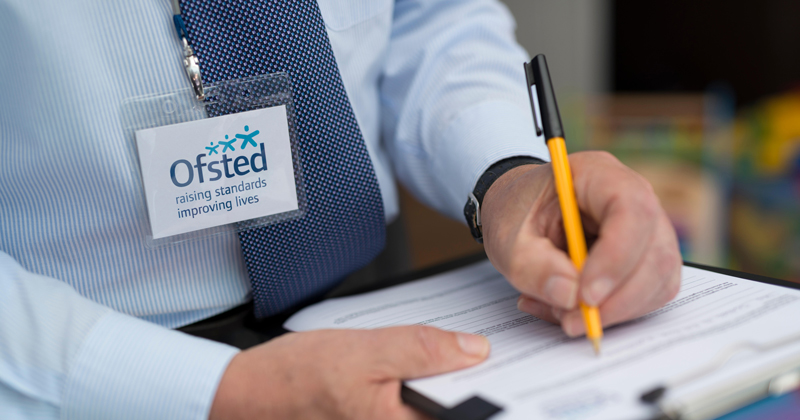School inspections play are important in maintaining the quality of education and ensuring that educational institutions meet the necessary standards. Among these inspections, Ofsted (Office for Standards in Education, Children’s Services and Skills) is a prominent authority in the United Kingdom responsible for evaluating the effectiveness of schools and educational services but does Ofsted inspect on Fridays?
This is a common question that often arises when teachers and students are wondering when these surprise educational audits happen. Do they strategically pick Mondays to maximize disruption, or maybe Fridays for a relaxed, end-of-week vibe?
In this article, we will see if Ofsted inspects on Friday and provide insights into the scheduling and practices of Ofsted inspections. We will also address frequently asked questions and shed light on how these evaluations contribute to improving educational institutions.
Table of contents
- What are School Ofsted Inspections?
- What are the Levels of Ofsted Inspection?
- What is the purpose of School Ofsted inspections?
- What is the Ofsted inspection process like? Step-by-step Guide
- Step 1: Notification
- Step 2: Preparing for the Inspection
- Step 3: Inspection Team Arrival
- Step 4: Observations and Data Analysis
- Step 5: Meetings and Discussions
- Step 6: Feedback and Drafting the Report
- Step 7: Verification and Validation
- Step 8: Issuing the Report
- Step 9: School’s Response
- Step 10: Follow-Up (if applicable)
- Does Ofsted inspect on Fridays?
- How often do schools undergo Ofsted inspections?
- How Do I Get Outstanding Ofsted?
- Conclusion
- Frequently Asked Questions
- References
- Recommendations
What are School Ofsted Inspections?
School Ofsted inspections are a cornerstone of the United Kingdom’s educational quality assurance framework.
Conducted by the Office for Standards in Education, Children’s Services and Skills (Ofsted), these inspections play a pivotal role in assessing schools’ effectiveness, performance, and overall quality.
By comprehensively evaluating various aspects of educational institutions, Ofsted inspections drive continuous improvement in teaching, learning, and student outcomes.
Read also: What Do Colleges Look For In Essays | Best Tips
What are the Levels of Ofsted Inspection?
Ofsted uses a four-point grading system to inspect schools:
1. Outstanding
This is the highest possible rating, signifying exceptional educational provision. Here’s what an “Outstanding” school typically demonstrates:
- Exceptional Student Outcomes
- Strong Leadership and Management
- Effective Teaching
- Positive School Culture
- Excellent Data Management
2. Good
This denotes a school that meets all the expected standards and demonstrates some notable strengths.
- Good Student Outcomes
- Effective Leadership and Management
- Good Teaching
- Positive School Culture
- Effective Data Management
3. Requires Improvement
This indicates the school needs to improve in some areas to meet all the expected standards. Inspectors will outline specific areas for development.
- Varied Student Outcomes
- Leadership and Management Require Improvement
- Varied Teaching Quality
- Aspects of the School Culture Need Improvement
- Data Management Needs Improvement
4. Inadequate
This is the lowest rating, indicating serious weaknesses across the school and a need for significant improvement. Inspectors may recommend special measures to address these concerns.
- Poor Student Outcomes
- Serious Weaknesses in Leadership and Management
- Inadequate Teaching
- Serious Concerns about the School Culture
- Ineffective Data Management
What is the purpose of School Ofsted inspections?
School Ofsted inspections are an integral part of the United Kingdom’s education system, serving as a mechanism to ensure the delivery of high-quality education and promoting accountability among educational institutions. Led by the Office for Standards in Education, Children’s Services and Skills (Ofsted), these inspections play a crucial role in assessing the effectiveness of schools and driving continuous improvement.
The primary purpose of School Ofsted inspections is to assess and report on the quality of education and other services provided by schools. These inspections aim to determine whether schools meet the required standards and deliver an education that effectively supports students’ development and achievement.
School Ofsted inspections serve as a vital mechanism to ensure that UK schools maintain high standards of education and effectively support student growth. By focusing on a holistic assessment of teaching, leadership, student welfare, and more, these inspections promote accountability, encourage continuous improvement, and contribute to the overall enhancement of the education system for the benefit of students, parents, and society.
Check out: Santa Clara Acceptance Rate | My Admission Chances
What is the Ofsted inspection process like? Step-by-step Guide
Here is a step-by-step guide for Ofsted inspection process:
Step 1: Notification
The school receives notification from Ofsted about the upcoming inspection. The notice is sent on the afternoon of the working day before the inspection. This short notice is deliberate to ensure the inspection reflects the school’s usual operations.
Step 2: Preparing for the Inspection
The school prepares necessary documentation, data, and other information that will be useful for the inspection. This includes information about the curriculum, student progress, behavior policies, safeguarding measures, and more.
Step 3: Inspection Team Arrival
The inspection team, consisting of trained inspectors, arrives at the school. The team leader introduces the inspection process to the school’s leadership team and explains the focus areas of the inspection.
Step 4: Observations and Data Analysis
Inspectors start observing lessons, interacting with students and staff, and analyzing student achievement, progress, and behavior data. They may also review records and documentation to understand the school’s policies and practices.
Step 5: Meetings and Discussions
Inspectors discuss with the school’s leadership team, teachers, students, and sometimes parents. These interactions provide additional insights into the school’s performance, strengths, and areas for improvement.
Read also: 10 Best Cognitive Science Colleges | Cost & Scholarship
Step 6: Feedback and Drafting the Report
Inspectors provide feedback to the school based on their observations and discussions. This may include both commendations and recommendations for improvement. Inspectors start drafting the report, outlining their findings and judgments.
Step 7: Verification and Validation
The inspection report goes through an internal verification and validation process within the Ofsted organization to ensure accuracy and fairness.
Step 8: Issuing the Report
The final inspection report is available to the school, parents, and the public. It includes an overall judgment, specific findings, strengths, and areas for improvement.
Step 9: School’s Response
The school reviews the report, acknowledges its strengths, and considers the areas for improvement. The school may develop an action plan to address the identified issues.
Step 10: Follow-Up (if applicable)
For schools rated as “Requires Improvement” or “Inadequate,” follow-up inspections might occur to monitor progress and ensure that the recommended changes are being implemented.
Check out: 10 Best Landscape Architecture Colleges | Scholarships
Does Ofsted inspect on Fridays?
Yes, Ofsted inspections can occur on any day of the week, including Fridays. The scheduling of inspections is based on various factors, such as the availability of inspectors, the school’s calendar, and logistical considerations.
Ofsted aims to ensure that inspections accurately represent the school’s operations. Reviews are flexible to accommodate the needs of both the school and the inspectors. Whether it’s a Friday or any other day, the goal of Ofsted inspections remains the same – to assess the quality of education and support continuous improvement in educational institutions.
See also: What Majors Is John Hopkins Known For In | Full Guide
How often do schools undergo Ofsted inspections?
The frequency of Ofsted inspections for schools in the United Kingdom depends on the current rating of the school. Here’s a general guideline:
- Outstanding Schools: Schools rated as “Outstanding” can usually expect an inspection every 5 to 6 years. These inspections ensure that the school maintains its high standards.
- Good Schools: Schools that have received a “Good” rating have the inspection every 3 years. This frequency allows Ofsted to monitor the school’s ongoing performance and ensure it meets the required standards.
- Requires Improvement or Inadequate Schools: Schools rated as “Requires Improvement” or “Inadequate” will undergo more frequent inspections to monitor their progress closely.
It’s important to note that the exact timing of inspections may vary based on specific circumstances, changes in leadership, significant events, or other factors that might warrant an earlier inspection. The goal of Ofsted inspections is to support continuous improvement in schools, regardless of their current rating.
Read also: How To Study For The ACT In Less Time | Timetable, Schedules
How Do I Get Outstanding Ofsted?
Achieving an Outstanding Ofsted rating is a true mark of excellence for any school. It signifies the school is not just meeting standards, but exceeding them and providing exceptional role models for education. Here’s a detailed breakdown of key areas to focus on:
Exceptional Student Outcomes
This goes beyond good grades. Students in an Outstanding school consistently outperform national averages across subjects and year groups. Look for evidence of strong progress from individual starting points, ensuring even students who may have faced challenges demonstrate significant development.
Outstanding schools nurture well-rounded individuals. There will be evidence of strong literacy and numeracy skills alongside critical thinking, problem-solving, and creativity. Students should demonstrate resilience, independence, and a love for learning.
Additionally, there should be remarkable Social, Moral, Spiritual, and Cultural (SMSC) development. Schools should foster positive attitudes, values, and behaviors. Look for evidence of respect for diversity, tolerance, and understanding of different cultures. Students should be actively involved in their communities and demonstrate good citizenship qualities.
Strong Leadership and Management
An Outstanding school has a clear and ambitious vision for the future, with a well-defined strategy for achieving it. Leaders should be able to articulate the vision and inspire staff and students to strive towards it.
Inspectors look for a culture of continuous improvement. The school should have robust systems for self-evaluation, identifying areas of strength and weakness and putting plans in place to address the latter. Outstanding schools also delegate effectively, equipping middle leaders and staff to take ownership of their roles and contribute to the school’s success.
Effective Teaching
Great teaching is central to an Outstanding school. Lessons should be well-planned, engaging, and cater to the diverse needs of all students. Teachers should use a variety of teaching methods and resources to keep students stimulated and motivated.
Teachers should effectively assess student progress and provide clear, constructive feedback that helps students learn and improve, and have a deep understanding of their subject matter to explain complex concepts in a clear and accessible way.
Positive School Culture
All students deserve to feel safe and secure in school. An Outstanding school prioritizes student welfare and has robust safeguarding measures in place to prevent bullying and other forms of harm. Staff should build strong relationships with students based on mutual respect and trust.
All students, regardless of background or ability, should feel included and valued. The school should actively promote equality and diversity and ensure all students have equal opportunities to thrive.
Excellent Data Management
Schools striving for “Outstanding” use data effectively to track student progress, identify areas for improvement, and inform teaching strategies. Leaders should analyze data and use it to make informed decisions about the school’s direction.
Schools should also be transparent about their data with staff, parents, and the wider community. Data should be presented in a clear and accessible way to allow everyone to understand the school’s performance.
Conclusion
Ofsted inspections are significant as they contribute to maintaining high standards and driving school improvement. While inspections are not restricted to any specific day, the flexibility in scheduling allows for a comprehensive assessment of schools’ operations.
Whether it’s a Friday or any other day of the week, Ofsted inspections play a vital role in fostering excellence in education, benefiting both schools and the students they serve.
Check out: Latest Purdue Acceptance Rate By Major
Frequently Asked Questions
Yes, Ofsted inspections can occur on any day of the week, including Fridays. The scheduling of inspections depends on various factors, such as the availability of inspectors, the school’s calendar, and other logistical considerations.
While inspections are not limited to Fridays, they can occur on this day for various reasons. Fridays may be chosen to ensure that the inspection encompasses a whole school week, providing inspectors with a comprehensive view of day-to-day operations.
Schools typically receive notice of an impending Ofsted inspection on the afternoon of the working day before the inspection takes place. This short notice ensures that schools are evaluated under typical circumstances and prevents them from making drastic, temporary changes for the inspection.
The primary purpose of Ofsted inspections is to assess the overall quality of education and services provided by schools.
Ofsted inspections serve as a critical mechanism for accountability and improvement in schools. The feedback provided by inspectors highlights both commendable practices and areas that need enhancement.
References
- thinkstudent.co.uk– do Ofsted inspect on Fridays
- educationinspection.blog.gov.uk– do Ofsted inspect on Fridays
- assets.publishing.service.gov.uk– do Ofsted inspect on Fridays
Recommendations
- What Majors Is John Hopkins Known For | Full Guide
- How To Study For The ACT In Less Time | Timetable, Schedules
- Latest Purdue Acceptance Rate By Major
- 15 Best Game and Interactive Media Design Colleges
- 10 Best Rice University Majors For College Students
- How To Study For Anatomy And Physiology Test In The Shortest Time






